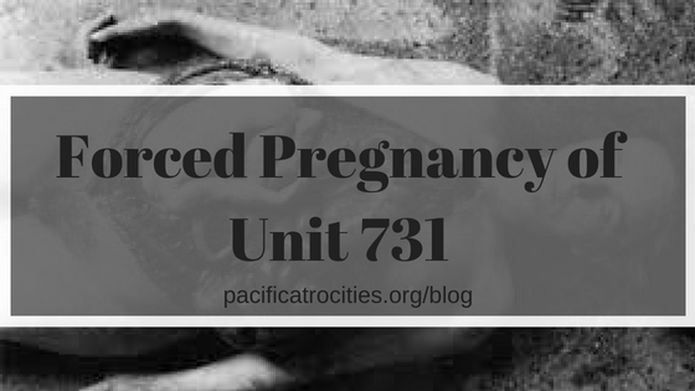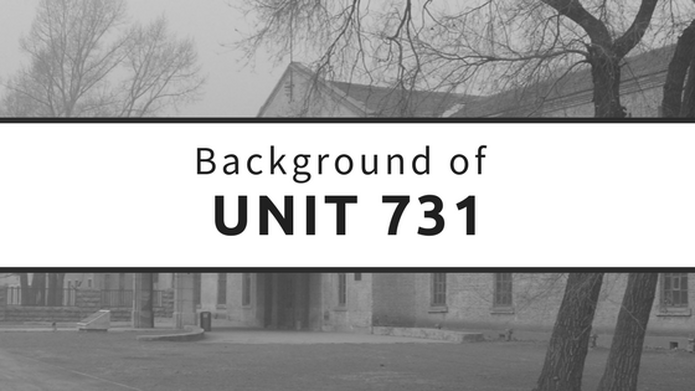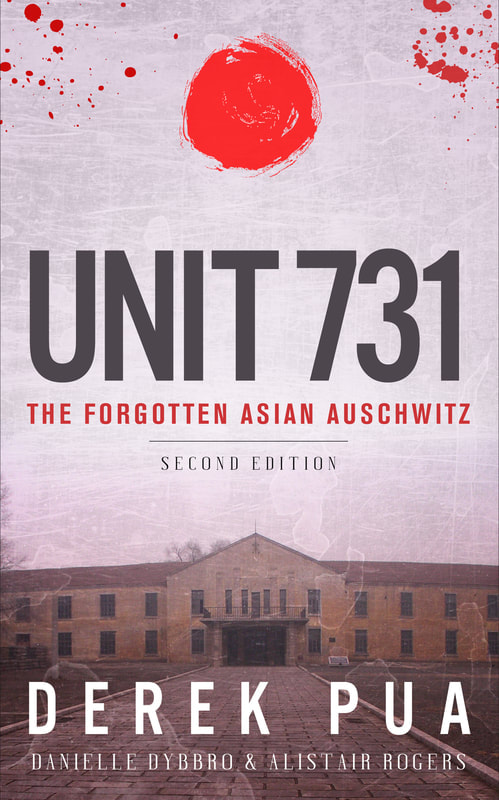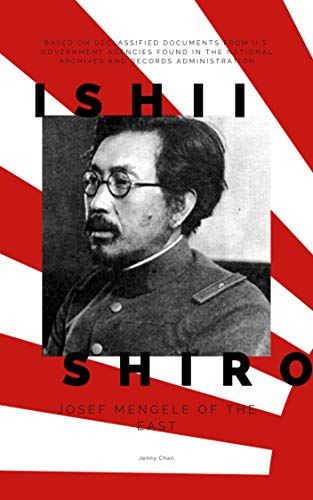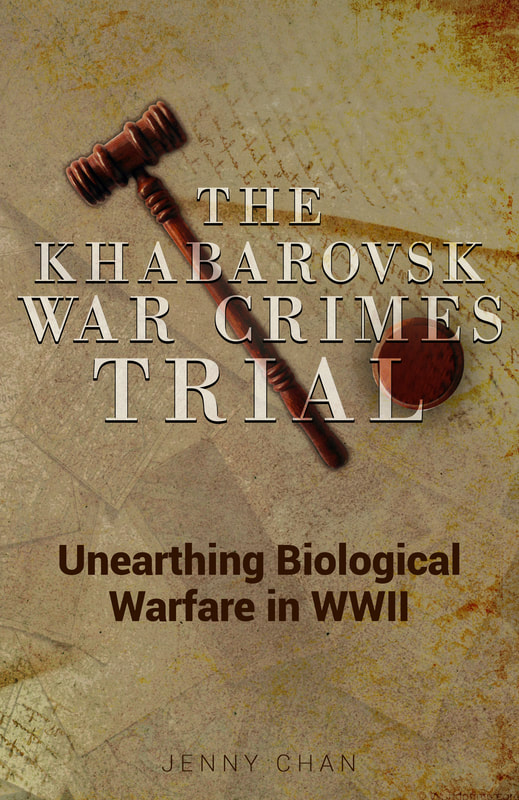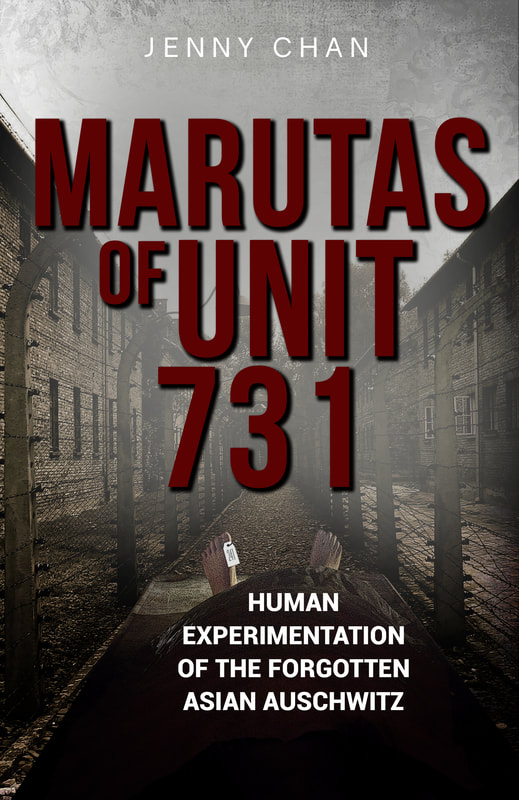|
by Danielle Dybbro In a previous blog post I wrote about Unit 731, but the facility in Harbin was not the only Imperial Japanese facility used for biological warfare research. General Shiro Ishii was the head of the Imperial Japanese biological warfare research program. (continued) Ishii made extensive visits to Europe in order to tour military hospitals during the mid 1920s, but the main reason for his European tour was to investigate biological warfare research. Ishii studied the research that was developed during World War I, which later heavily influenced his creation of Unit 731. Additionally, on his world tour, some of the countries he visited were secretly researching biological warfare, and a Military Attaché in the Japanese Embassy in Washington D.C. “said that he heard that Ishii had studied bacteriological warfare at the Massachusetts Institute of Technology in Boston.” Upon his return to Japan in 1930, he managed to convince the Japanese State Department of Military Affairs to develop a biological weapons program. The invasion of Manchuria in 1931 by the Japanese was the golden opportunity that General Ishii had been waiting for. The wide expanses of uninhabited land served as the perfect arena for conducting biological warfare research, as the small island nation of Japan had severely limited research potential because of the issues of space and safety. By 1933 Ishii had established facilities in Manchuria for conducting both defensive and offensive biological warfare research. Defensive research involved the production of vaccines and offensive research was the main focus of the notorious Unit 731 for the purpose of developing diseases for use as weapons, including plague, glanders, anthrax, and typhus. World War II began in 1939 for the Western world, but by this time there were an estimated 18 other biological warfare facilities scattered throughout the Japanese empire, from Manchuria in the north to Indonesia in the south. In the use of human subjects, researchers would refer to the subjects as ‘marutas’ which translated to ‘wooden logs.’ By dehumanizing the Chinese, Russian, Mongolian, and Communists that were rounded up by the Japanese secret police, the Kempeitai, researchers could justify the harsh treatment of marutas in their experiments. In a testimony, Yoshio Shinuzaka confirmed this practice and said that, “We called the victims ‘logs’… We didn't want to think of them as people. We didn't want to admit that we were taking lives. So we convinced ourselves that what we were doing was like cutting down a tree. When you see someone in that state, you just can't move. Your mind goes blank. The fear is overwhelming.” Evidence of biological attacks in China are recorded in official records of a number of Japanese military officers, including field tests in Chinese villages leading to outbreaks of cholera and the plague. At Unit 731, bombs with fleas infected with the plague, shrapnel carrying anthrax, and planes spraying other diseases were tested on prisoners. Prisoners would be tied to stakes and the bombs would be dropped at varying distances and their bodies were monitored for reactions, which often involved cutting subjects open without anesthetic. After death, their organs would be preserved for further study. South of Harbin, where Unit 731 was located, was the city of Changchun, which was chosen as the capital for the Manchurian puppet state. In 1936 the Anti-Epizootic Protection of Horses Unit was created in Changchun, which later became known as Unit 100. Unit 100 was not run by Ishii, but by Major Yujiro, a veterinarian who sometimes cooperated with Ishii in joint research. This unit specialized in the prevention of animal diseases, but also researched plant and animal biological warfare akin to Unit 731’s activities. The unit’s focus was on sabotage operations, with research conducted for the cultivation of crop viruses and livestock diseases. Both people and animals were subjected to experimentation, and a number of recorded testimonies from former workers and medical students describe seeing dead bodies being wheeled away from operating rooms and animals being poisoned with contaminated crops. In Soviet-sponsored war trials, a former Unit 100 worker confirmed that he had “taken part in these inhuman experiments on living people, in bacteriological sabotage and in the preparations for bacteriological warfare against the Soviet Union,” and other admissions of guilt are found throughout the trial transcript. According to some scholarship, the United States government struck a plea bargain with General Ishii in exchange for all the medical research acquired from the experiments conducted at Unit 731. In a letter written in 1998, the Director of the Department of Justice’s Office of Special Investigations in Los Angeles confirmed that the exchange occurred: “Two of these [formerly classified] reports [about biological warfare data collected by the Japanese and the arrangement made between the United States and Lieutenant General Shiro Ishii, the Commander of the Unit 731], dated November 17, 1981 and May 5, 1982, confirm that Ishii and his colleagues received immunity from prosecution and that, in exchange, they provided a great deal of information to U.S. authorities.” In contrast, in memo dated from 1995 from the Department of the Army, Edward Drea, then the Chief of the Research and Analysis Division of Military History, claims that “there is no primary source material guaranteeing General Ishii immunity from prosecution. He was not tried as a war criminal apparently in order to conceal from the Soviet Union the extent of the information he provided the United States about biological warfare. Even that interpretation, however, rests on very fragmentary evidence.” However, in 1995 in another primary government source, an internal memo claims that with the emergence of the Cold War, the Americans felt that they could not entrust the biological warfare information amassed by the Japanese to the Soviets. In order to keep the research from falling into Soviet hands, the documents handed over to the United States in 1945 were classified and thus were not able to be used as evidence in the Tokyo War Crimes Trials. Despite this cover up, the Soviet Union tried twelve of them in 1949 in the Khabarovsk Trials, which are available to read online through Google books. Unfortunately, the United States “dismissed the verdicts [in the Khabarovsk trials] with the evidence as another in a series of long-running Stalinist show trials.” Additionally, though 12 Japanese officers involved with Unit 731 were tried in Khabarovsk, the convicts received prison sentences ranging from 2-25 years and most were freed in the 1950s. This is in stark contrast to the Nuremburg and Tokyo war crime trials, which resulted in German and Japanese officials being hanged or sentenced to life in prison. Scholarship on Japan’s biological warfare program has been increasing since the 1980s with admissions of guilt by former Unit 731 workers and the discovery of a cache of forgotten military records in a Tokyo bookstore in 1984, but the issue is that the evidence is scattered and often fragmentary in nature. Historians must continue to piece together the narrative and bring to light a fuller picture of Imperial Japan’s biological warfare research that began well before the outbreak of World War II. References
Related ArticlesRelated Books
3 Comments
Erik Rivers
1/27/2018 06:43:16 am
Preparing a medical brief on the Plague, I happened upon your website. Very well done! You presented a in very good corollary to what I learned in college history back in 1989.
Reply
10/26/2018 09:42:00 pm
Excellent article. On the US agreement to amnesty Ishii and the rest o the Unit 731 personnel, you may be I treated in my researches into this: https://medium.com/@jeff_kaye/department-of-justice-official-releases-letter-admitting-u-s-amnesty-of-unit-731-war-criminals-9b7da41d8982?source=linkShare-1de7092c06f0-1540615210
Reply
Leave a Reply. |
- Home
- Stories
-
Internship
- Summer 2024 Internship
- Summer 2023 Internship
- Fall 2022 Internship
- Summer 2022 Internship
- Summer 2021 Internship
- Fall 2020- Spring 2021 Internship
- Summer 2020 Internship
- Fall 2019 Internship
- Summer 2019 Internship >
- School Year 2018-2019 Internship
- Summer 2018 Internship >
- Fall 2017 Internship
- Summer 2017 Internship >
- Books
- Archives
-
Resource Page
-
Supplementary Research Guides
>
- Unit 731 - Guide >
-
Philippines' Resistance - Guide
>
- Philippines World War II Timeline
- The Japanese Invasion & Conquest of the Philippines
- Bataan Death March
- Formation of Underground Philippines Resistance
- Supplies of the Guerrilla Fighters
- The Hukbalahap
- Hunter's ROTC
- Marking's Guerrillas
- United States Army Forces in the Philippines of Northern Luzon (USAFIP-NL)
- The Aetas
- Chinese and Filipino-Chinese Nationalist Guerrilla Units
- The Female Faces of the Philippine Guerrillas
- Rising Sun Flag - Guide >
- Pinay Guerrilleras - Guide >
- Fall of Singapore - Guide >
- Three Years and Eight Months - Guide >
- Siamese Sovereignty - Guide >
- The Khabarovsk War Crimes Trial - Guide >
- Unit 731 Cover-up : The Operation Paperclip of the East - Guide >
- Marutas of Unit 731 - Guide >
- Prince Konoe Memoir - Guide >
- Competing Empires in Burma - Guide >
- Battle of Shanghai - Guide >
- Ishi Shiro - Guide >
- Taiwan The Israel of the East - Guide >
- Seeking Justice for Biological Warfare Victims of Unit 731 - Guide >
- Rice and Revolution - Guide >
- Clash of Empires - Guide >
-
Hunger for Power and Self-SufficiencyI - Guide
>
- The Influence of War Rations on Post-War Culinary Transformations
- How World War II Complicated Food Scarcity and Invention
- American Military Innovations
- Government-Sponsored Food Inventions in Europe during World War II
- Feeding the Army: The Adaptation of Japanese Military Cuisine and Its Impact on the Philippines
- Mixed Dishes: Culinary Innovations Driven by Necessity and Food Scarcity
-
Denial A Quick Look of History of Comfort Women and Present Days’ Complication - Guide
>
- The Comfort Women System and the Fight for Recognition
- The Role of Activism and International Pressure
- The Controversy over Japanese History Textbooks
- The Sonyŏsang Statue and the Symbolism of Public Memorials
- Activism and Support from Japanese Citizens
- The Future of Comfort Women Memorials and Education
- Echoes of Empire: The Power of Japanese Propaganda - Guide >
- Lesson Plans >
-
Supplementary Research Guides
>
|
Pacific Atrocities Education
730 Commercial Street San Francisco, CA 94108 415-988-9889 |
Copyright © 2021 Pacific Atrocities Education.
We are a registered 501 (c)(3) charity. |
- Home
- Stories
-
Internship
- Summer 2024 Internship
- Summer 2023 Internship
- Fall 2022 Internship
- Summer 2022 Internship
- Summer 2021 Internship
- Fall 2020- Spring 2021 Internship
- Summer 2020 Internship
- Fall 2019 Internship
- Summer 2019 Internship >
- School Year 2018-2019 Internship
- Summer 2018 Internship >
- Fall 2017 Internship
- Summer 2017 Internship >
- Books
- Archives
-
Resource Page
-
Supplementary Research Guides
>
- Unit 731 - Guide >
-
Philippines' Resistance - Guide
>
- Philippines World War II Timeline
- The Japanese Invasion & Conquest of the Philippines
- Bataan Death March
- Formation of Underground Philippines Resistance
- Supplies of the Guerrilla Fighters
- The Hukbalahap
- Hunter's ROTC
- Marking's Guerrillas
- United States Army Forces in the Philippines of Northern Luzon (USAFIP-NL)
- The Aetas
- Chinese and Filipino-Chinese Nationalist Guerrilla Units
- The Female Faces of the Philippine Guerrillas
- Rising Sun Flag - Guide >
- Pinay Guerrilleras - Guide >
- Fall of Singapore - Guide >
- Three Years and Eight Months - Guide >
- Siamese Sovereignty - Guide >
- The Khabarovsk War Crimes Trial - Guide >
- Unit 731 Cover-up : The Operation Paperclip of the East - Guide >
- Marutas of Unit 731 - Guide >
- Prince Konoe Memoir - Guide >
- Competing Empires in Burma - Guide >
- Battle of Shanghai - Guide >
- Ishi Shiro - Guide >
- Taiwan The Israel of the East - Guide >
- Seeking Justice for Biological Warfare Victims of Unit 731 - Guide >
- Rice and Revolution - Guide >
- Clash of Empires - Guide >
-
Hunger for Power and Self-SufficiencyI - Guide
>
- The Influence of War Rations on Post-War Culinary Transformations
- How World War II Complicated Food Scarcity and Invention
- American Military Innovations
- Government-Sponsored Food Inventions in Europe during World War II
- Feeding the Army: The Adaptation of Japanese Military Cuisine and Its Impact on the Philippines
- Mixed Dishes: Culinary Innovations Driven by Necessity and Food Scarcity
-
Denial A Quick Look of History of Comfort Women and Present Days’ Complication - Guide
>
- The Comfort Women System and the Fight for Recognition
- The Role of Activism and International Pressure
- The Controversy over Japanese History Textbooks
- The Sonyŏsang Statue and the Symbolism of Public Memorials
- Activism and Support from Japanese Citizens
- The Future of Comfort Women Memorials and Education
- Echoes of Empire: The Power of Japanese Propaganda - Guide >
- Lesson Plans >
-
Supplementary Research Guides
>

